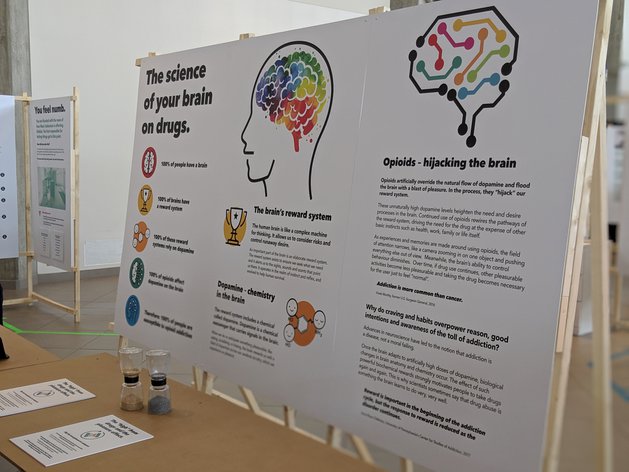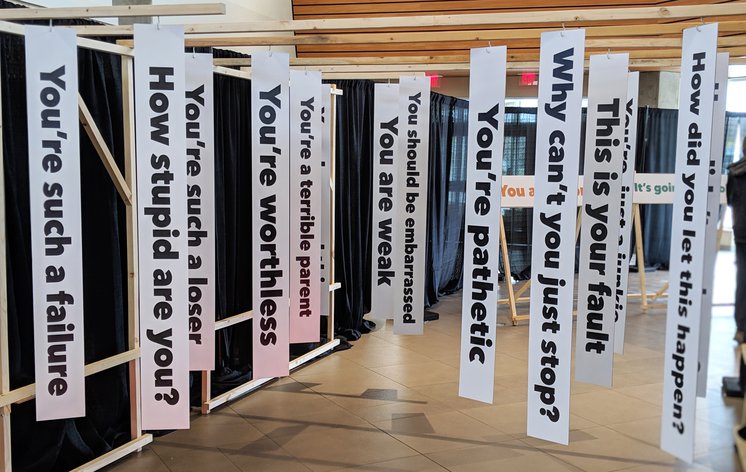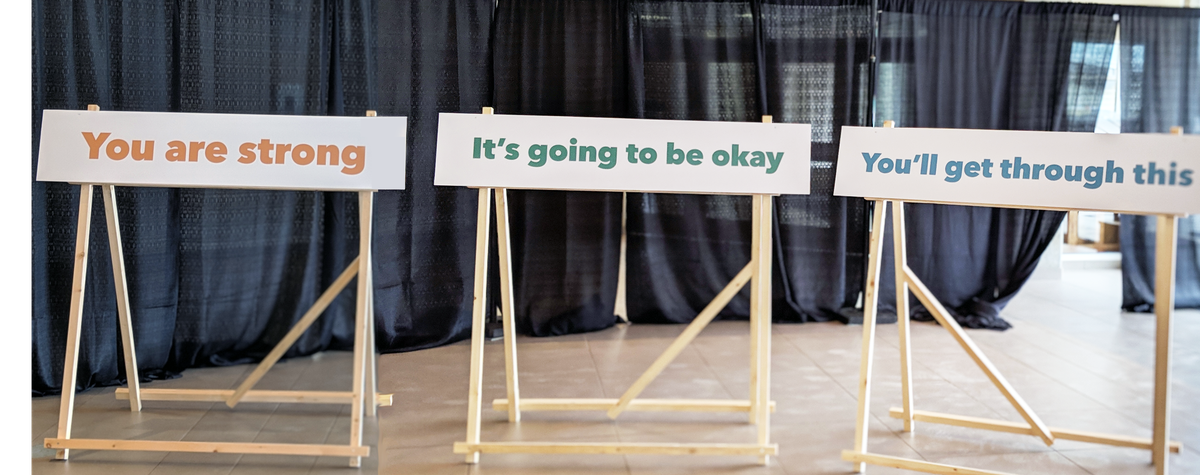Opioids are a suite of drugs that are powerful and potentially lethal. The Public Health Agency of Canada reports that in 2018, there were 775 opioid-related deaths in Alberta and 4,460 overall in Canada – one life lost every two hours. What many may not realize is how easily anyone can become addicted to opioids, no matter their generation or socio-economic status.
With its interactive exhibit, Opioids Don’t Discriminate, Strathcona County Family and Community Services and its Community Drug Strategy partners hope to "reduce stigma about people who use opioids, build empathy and awareness by humanizing opioid use statistics and provide local support and resource information." The exhibit profiles local opioid use statistics while inviting participants to walk through three different narratives based on real-life experiences: David, Max and Natasha.
David is a husband and father with a great job. He injured himself playing recreational hockey. David is first prescribed opioids for his pain due to injury but soon needs more and more pills just to function.
Max is 16-years-old and just moved to a new town with his mom and younger brother. He feels anxious from having to adjust to a new life, school and friends. His mom has been busy adjusting to her new job, so she asks Max to help take care of his brother and grandmother, who is recovering from hip surgery. Max is overwhelmed and gets into serious trouble when he finds and uses his grandmother’s opioids prescribed for her recovery.
Natasha is Max’s mom. She too is adjusting to a new life. She hopes she made the right choice in moving her family to be closer to her mother who, as mentioned, is recovering from surgery. What Natasha learns almost too late is the toll that all this change has taken on her teenage son.

The science of your brain on drugs
In the center of the narratives in the exhibit is a summarized explanation of how addiction affects the brain. The following is a simplified version of the explanation, pictured above.
100% of people have a brain and 100% of brains have a reward system.
The brain’s reward system is a group of neural structures that are activated when a person does something that makes them feel good or rewarded.
100% of the brain’s reward system relies on dopamine and 100% of opioids affect dopamine in the brain.
The good feelings are powered by dopamine, an important neurotransmitter in the brain that motivates and makes a person feel happy. When the brain is flooded with dopamine, which happens when using opioids, the brain naturally wants to keep a good thing going.
Therefore, 100% of people are susceptible to opioid addiction.
From the poster: “Opioids artificially override the natural flow of dopamine and flood the brain with a blast of pleasure. In the process, [opioids] hijack our reward system.” The brain learns as it goes and soon adapts to artificially high doses of dopamine, consequently building up its tolerance to the drug. Each time opioids are used, a higher dose will be needed to achieve the flood of dopamine-induced euphoria, which continues the cycle.
This is a simplified explanation of the neuroscience of addiction, but it is effective and accessible for all.

You are worthless, pathetic and weak. You’re a terrible parent. Why can’t you just stop?
As attendees reach the end of the exhibit, they walk through the “crisis node,” which contains discouraging messages that swing back and forth, hindering arriving at recovery, i.e., the end of the exhibit. The stigma of drug use and addiction is the main reason people avoid getting help. The crisis node challenges attendees to experience the stigma on the receiving end, perhaps rethink their narrow beliefs about opioids and addiction, and build their empathy.

You are strong. It’s going to be okay. You’ll get through this.
Once attendees have walked through the crisis node, they are met with messages of hope. After that, they come upon several booths crewed by friendly community partners offering helpful public resources.
More on the exhibit and do-it-yourself kit
The Opioids Don’t Discriminate exhibit first ran November 5-8, 2018, but was cut short by an unrelated incident. It was re-launched this spring and ran April 30-May 3 in Strathcona County and in Red Deer May 27-30.
Many Alberta communities have shown interest in hosting their own version of this exhibit, but it is not logistically feasible to transport. However, the Strathcona County Family and Community Services team is in the process of finalizing a do-it-yourself kit. The kit will provide historical context around the Opioids Don’t Discriminate exhibit as well as resources to empower each community to do something about the opioids crisis or another social issue affecting their residents. The kit can be scaled to suit whatever the needs are for the community. Strathcona County Family and Support Services hopes to release this kit for online download in late September or early October.
To learn more about this initiative and the work Strathcona County has been doing on the opioid crisis, please visit www.strathcona.ca/opioids.
References available upon request
